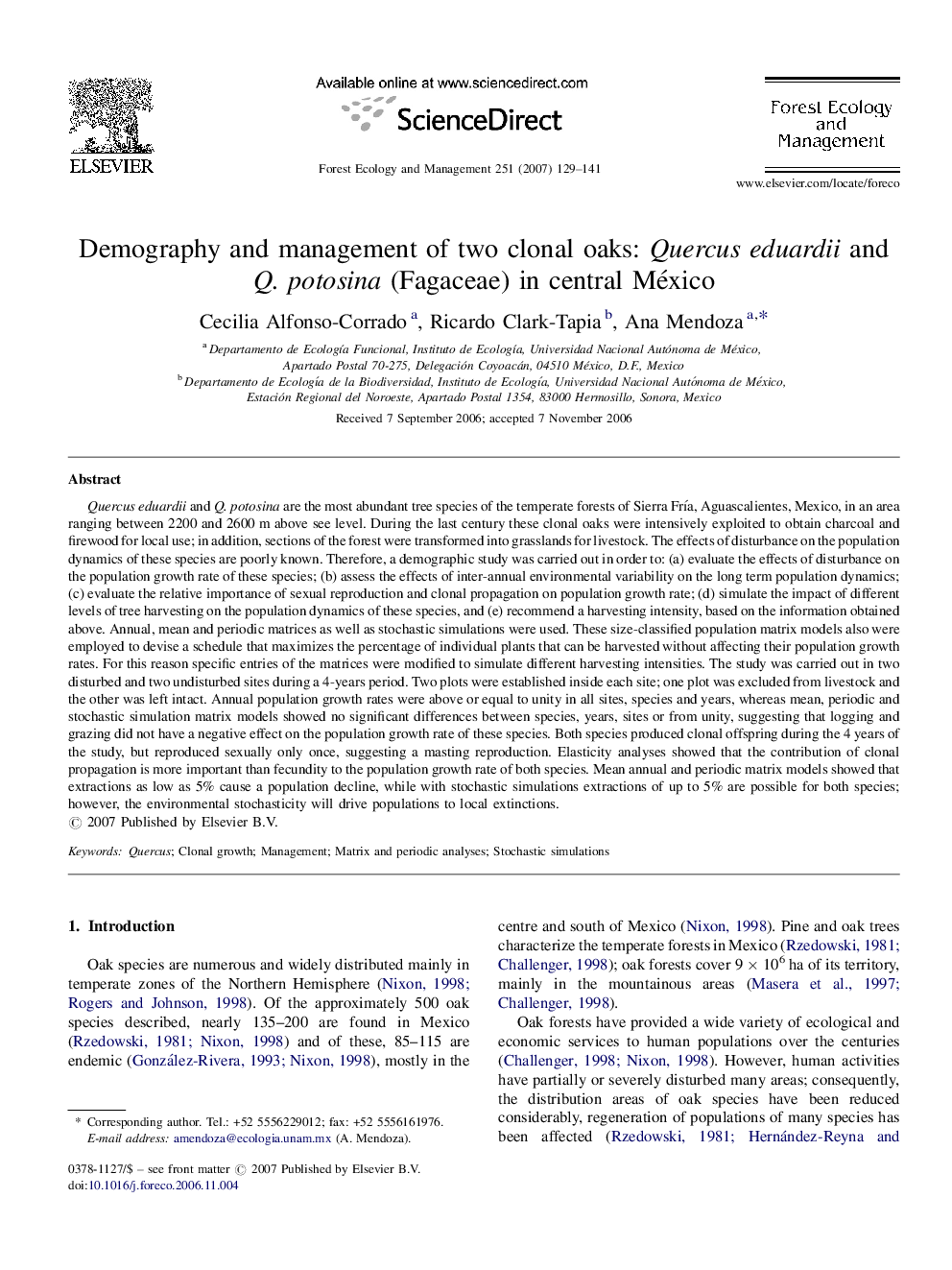| کد مقاله | کد نشریه | سال انتشار | مقاله انگلیسی | نسخه تمام متن |
|---|---|---|---|---|
| 90148 | 159368 | 2007 | 13 صفحه PDF | دانلود رایگان |

Quercus eduardii and Q. potosina are the most abundant tree species of the temperate forests of Sierra Fría, Aguascalientes, Mexico, in an area ranging between 2200 and 2600 m above see level. During the last century these clonal oaks were intensively exploited to obtain charcoal and firewood for local use; in addition, sections of the forest were transformed into grasslands for livestock. The effects of disturbance on the population dynamics of these species are poorly known. Therefore, a demographic study was carried out in order to: (a) evaluate the effects of disturbance on the population growth rate of these species; (b) assess the effects of inter-annual environmental variability on the long term population dynamics; (c) evaluate the relative importance of sexual reproduction and clonal propagation on population growth rate; (d) simulate the impact of different levels of tree harvesting on the population dynamics of these species, and (e) recommend a harvesting intensity, based on the information obtained above. Annual, mean and periodic matrices as well as stochastic simulations were used. These size-classified population matrix models also were employed to devise a schedule that maximizes the percentage of individual plants that can be harvested without affecting their population growth rates. For this reason specific entries of the matrices were modified to simulate different harvesting intensities. The study was carried out in two disturbed and two undisturbed sites during a 4-years period. Two plots were established inside each site; one plot was excluded from livestock and the other was left intact. Annual population growth rates were above or equal to unity in all sites, species and years, whereas mean, periodic and stochastic simulation matrix models showed no significant differences between species, years, sites or from unity, suggesting that logging and grazing did not have a negative effect on the population growth rate of these species. Both species produced clonal offspring during the 4 years of the study, but reproduced sexually only once, suggesting a masting reproduction. Elasticity analyses showed that the contribution of clonal propagation is more important than fecundity to the population growth rate of both species. Mean annual and periodic matrix models showed that extractions as low as 5% cause a population decline, while with stochastic simulations extractions of up to 5% are possible for both species; however, the environmental stochasticity will drive populations to local extinctions.
Journal: Forest Ecology and Management - Volume 251, Issue 3, 15 November 2007, Pages 129–141